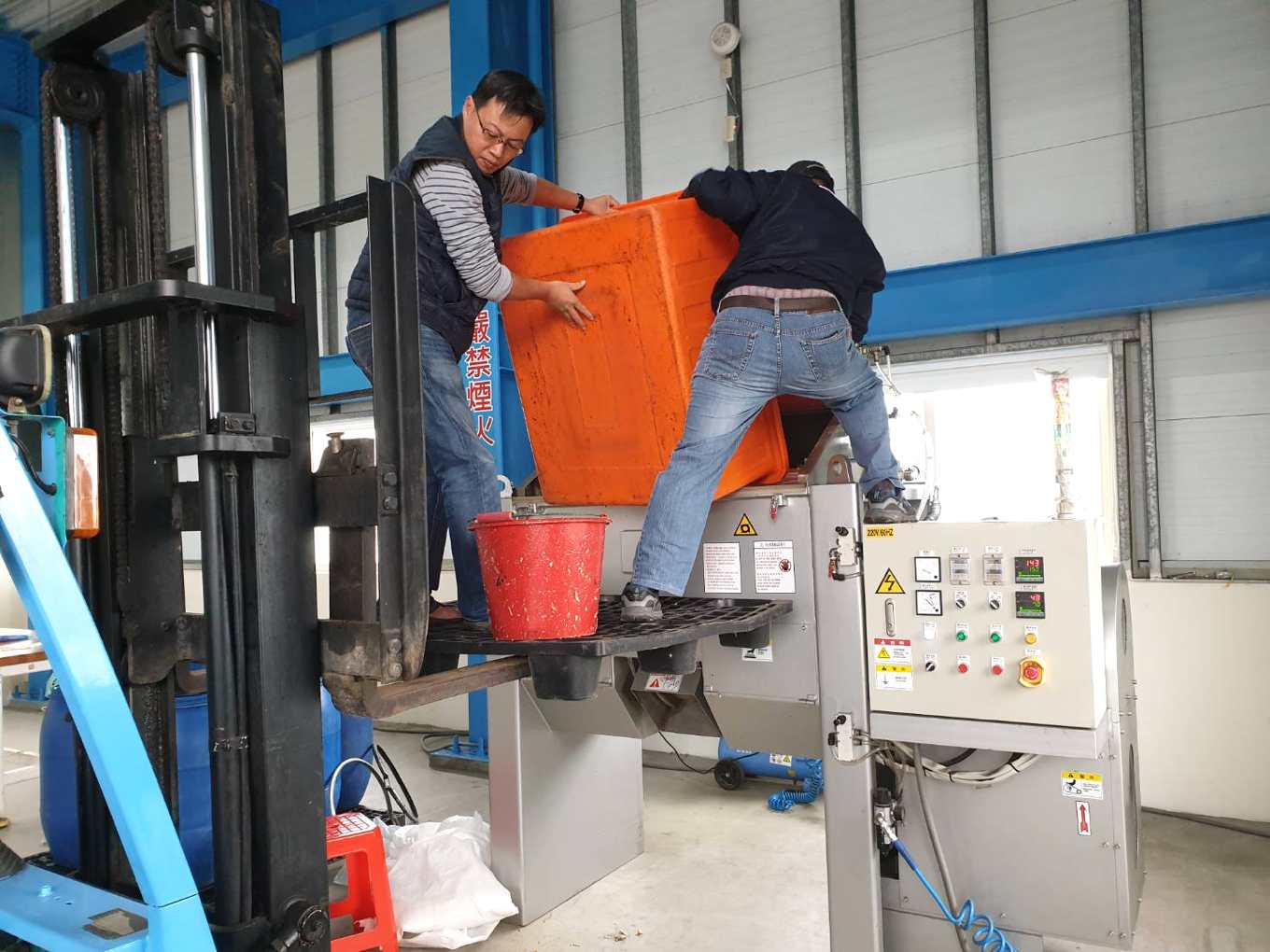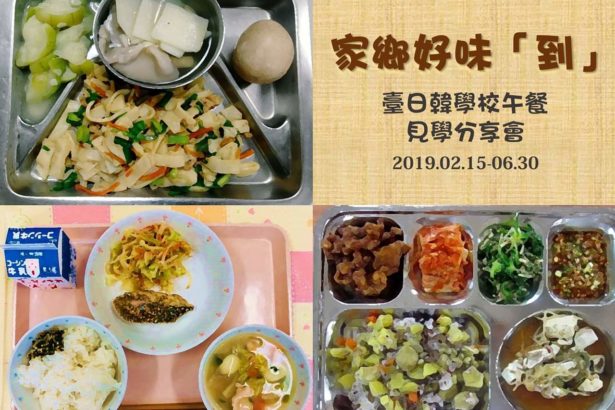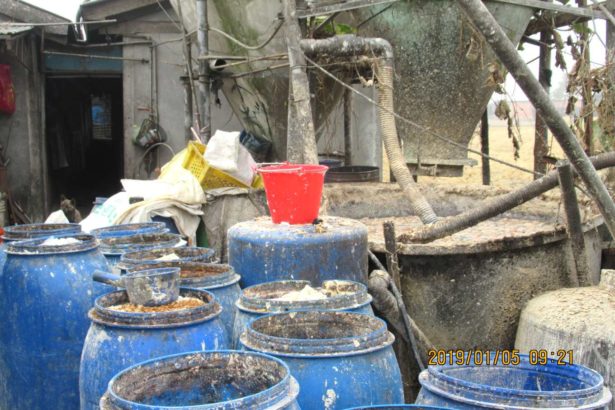Epidemic Prevention and Kitchen waste Battle 12 "(Jiyi Huadong) Total inventory of Kitchen waste production and removal capacity in Taiwan
Share + 1 Tweet Email
(upstream and downstream journalists Duan Yaxin and Lin Xiejun / tr. by Phil Newell)
If African classical swine fever breaks out tomorrow, food waste will immediately become a battlefield. Are all places ready? "upstream and downstream" contact local environmental protection bureaus for first-line information. This article is aimed at Keelung, Ilan, Hualien and Taitung counties. Please read the special series for other counties and cities.
(background note: the following food waste recycling figures are official statistics, but many food waste pig farmers say that the official statistics on food waste are not accurate, because there has been a long-standing situation of "reporting more than food waste" in the process of food waste recycling. Private operators drive minivans with buckets of food waste on them, so they accept them everywhere, mostly for households, snack bars and night markets, which may not be included in the statistics. )
Keelung City: uncooked kitchen waste in the past, if kitchen waste is banned, pigs will be disposed of by incinerator.
Huang Guie, head of the waste Management Section in Keelung City, said that the daily recovery of kitchen waste (generally discarded) is 12 tons in Keelung households and 3 tons in public institutions, which is not good at raw or cooked kitchen waste, but will not be collected if it is relatively hard shell. On the other hand, the food waste collected by the cleaning team will be used by pig farmers and digested by Taoyuan pig farm.
If there is a ban on raising pigs with food waste in the future, since there is no composting site in Keelung and the landfill is already saturated, the food waste will be drained and disposed of by an incinerator in the short term. The incinerator can handle 200 tons of garbage a day. Huang Kuei-E says, "plus 15 tons, the capacity should be fine." Huang said that at present, he has applied to the EPA for equipment for crushing kitchen waste, and the budget for the application is estimated to be between five to 6 million, and the kitchen waste bucket will also be planned to be purchased, and the manpower part will first be based on the manpower of the existing cleaning team, and then rolling adjustment in the future.
Huang said that at present, counseling has been carried out with the catering industry, and if food waste is prohibited from raising pigs, it will be necessary to entrust qualified private operators to deal with it in the future, or pay the EPA for transportation or incineration. "in fact, now (restaurant) operators also have to pay pig farms to collect them, but in different ways." As to whether operators who pay for their own food waste disposal will lead to random dumping, Huang says that operators are already paying for it, but they will try their best to provide channels and promote it, saying that they are not worried.
Yilan County: about 40 tons of cooked kitchen surplus every day, sent to bury first.
Jian Liangda, head of the waste Management Section of the Ilan County Environmental Protection Bureau, explained that the daily kitchen waste of every household in Yilan County is about 25 tons, and that of restaurants and group meals is about 13 tons. With sporadic undeclared cases, it is estimated that the daily amount of cooked food waste is 40 tons.
In the event of an outbreak of classical swine fever, the food waste originally used for raising pigs will be sent to the landfill for disposal and will not be incorporated into the incinerator as far as possible. While the existing Luodong composting plant mainly deals with raw kitchen waste, it will not be considered for the time being because it is worried that the incorporation of cooked kitchen waste will affect the existing fertilizer products.
At present, there are two landfills in Ilan, which are located in Wujie and Samsung. Jian Liangda explained that because the water will precipitate and slowly digest after the kitchen waste is buried, the existing space should be enough to last more than half a year.

1.jpg)
Taitung centralized Kitchen waste treatment Plant. (photo courtesy of Taitung County Environmental Protection Bureau)
Try the pericarp enzyme to deodorize, the smell is much lighter.
In addition, in order to cope with the larger amount of food waste in the future, Taitung County began to try to use "peel" enzymes to deodorize in September last year. "during composting, there will be the smell of fermentation and sour water, so in the front-end treatment, after a bucket of kitchen waste is poured into the kitchen waste tank, there will be an automatic spraying system next to us, which will add enzymes to it, so we can overcome this problem. The smell is really much lighter. The equipment is right next to the composting yard, and then use the bobcat to dig through it. "
Enough space to bury, no incinerator, long-term regional composting
Song Huimei further points out that Taitung is also taking stock and activating a total of 13 local landfills. "We have more space than other counties and cities, and the landfills can cope with unexpected needs. In the event of an outbreak, we can also deal with a large amount of food waste." As for the incinerator under its jurisdiction, although there is one, it has not been started for a long time, nor has it been included in this kitchen waste removal plan. in the use of bioenergy, she frankly admits that the supply of food waste must be at least 100 tons in order to achieve the benefit of mechanical operation. however, the amount of kitchen waste in Taitung is less than that in other counties and cities, and it will not be the first choice for the removal of kitchen waste in Taitung in the short term.
In the face of long-term planning for the fate of food waste, she believes that more regional composting sites can be set up to meet the needs of food waste disposal in villages and towns. As for those who cannot relocate to build a composting plant, the Environmental Protection Bureau has also applied to the central government for two dryers (one with a capacity of about 14 tons) to recover the food waste drained by the public and go through the drying process to facilitate the storage and transportation of food waste. "We have a total of 16 townships. After drying, the food waste can be transported and can be transferred to villages and towns with composting plants for use."
94 farms raise pigs with kitchen waste, and many small pig farms are converted to feed.
According to the latest statistics from the Taitung County Department of Agriculture in November last year, there are 168 pig farms in Taitung, of which 94 use food waste to feed pigs. Rao Heqi, head of the Animal production and Conservation Section of the Agriculture Department of the Taitung County Government, said that the four larger pig farms, including two that passed the "reuse check", have received subsidies and changed to feed. Almost all small pig farms have converted to feed on their own. "small pig farms have changed feed policy, but many of them have not applied for subsidies, mainly because the land is complex and many are not legal. Most of the leased land used was originally for farming and fruit trees, not for animal husbandry facilities. We originally thought that there were only 54 food waste pig farms, but last year we found that there were 94, but many of them were only one or two pigs at home. "
Share + 1 Tweet Email
- Prev

Joint publicity-Taiwan, Japan and South Korea School luncheon sharing meeting Application Scheme
Joint publicity-Taiwan, Japan and South Korea School luncheon sharing meeting Application Scheme
- Next

Kitchen waste: the importance of the classification of kitchen waste and how much it can be disposed of.
Epidemic Prevention and Kitchen waste Battle 11 "(Changhua Chiayi County and City) Total inventory of Kitchen waste production and removal capacity in Taiwan
Related
- A course of planting techniques and methods on how to grow carrots
- How to plant the latest tulips?
- Is it better to pick tea in the morning or in the afternoon? When is the best time for tea to be picked? what is the third or fifth tea?
- Launch Yuanxiao Happy combination Haocha + Tea Yuan healthy Taste
- Penghu Tourism "Fireworks 20 Parade with You"
- 2022 West Lake Happiness holds "Digital Revitalization Voucher" and draws iphone13 and laptop.
- Banqiao Fuzhou social houses are designed to change start-up combined with police elimination to create a safe and livable environment
- The convenient measure of "mechanical weeding" in Xinbei has been abused and the Agriculture Bureau has imposed heavy penalties on the illegal land consolidation.
- Changgeng University Joins Hands with Four Memory Factories to Rescue Memory Talent Shortage
- The list of Taiwan's top 100 MVP managers is listed by the Director-General of the Farmers' Association of Sanxia District.

